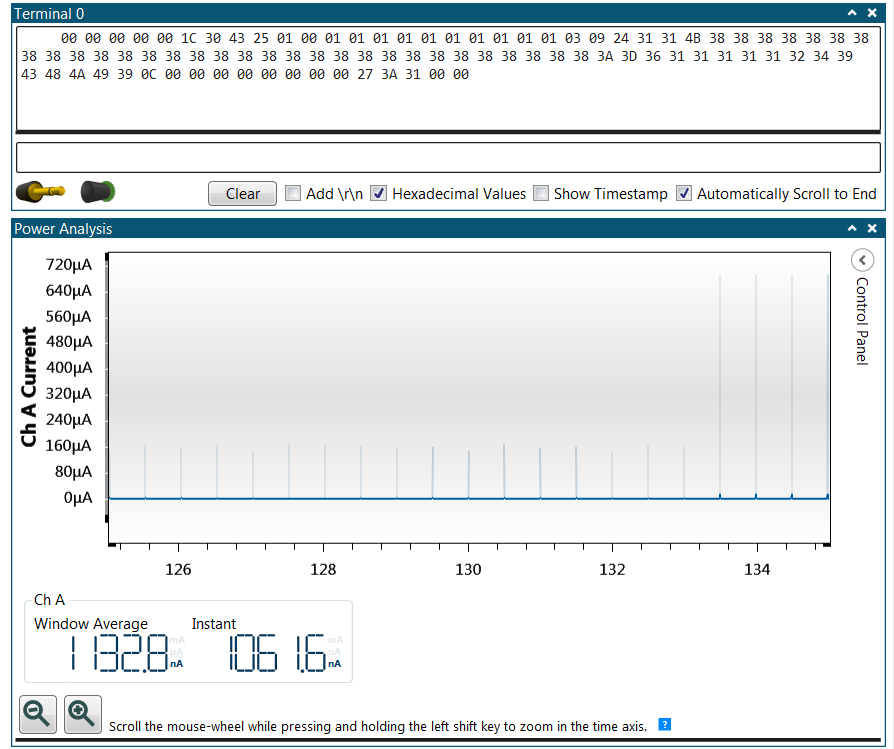The device has been programmed using the event system instead of the RTC interrupt routine to trigger an ADC conversion.
Todo: Observe the ADC functionality and power analysis using Data Visualizer.
Click the Data Visualizer tab to observe the ADC functionality and power
consumption, as shown in Figure 1.
Figure 1. ADC Data Print to USART Terminal and
Power Analysis

As shown in the terminal, the ADC result is printed only when the ADC result is
below 80, which is the ADC window low threshold value. When the value is above that, ADC WCMP
interrupt will not be triggered and hence no data is printed to terminal 0. This is the
same behavior as in the previous assignment.
Result: By rotating the potentiometer knob, the
voltage input to the ADC input pin, PB1, is changing. The ADC result is printed to the
terminal only when it is below the ADC window low threshold value. This is the same behavior
as in the previous assignment.
Now, when looking at the current consumption in the power analysis window, the
average current is about 1.13 μA which is slightly reduced from 1.18 μA in the previous
assignment. This is because the RTC interrupt has been replaced by the event system. It will
not wake up the device from the Standby Sleep mode to trigger the ADC conversion. The power
reduction is not significant because the device still requires to be waked up from Standby
Sleep mode.
Info: The ADC WCMP interrupt is the same interrupt source of the PTC window interrupt as circled
in Figure 4. It can wake up the device from Standby Sleep
mode.
The event system solution also reduces the current consumption of the high peak
glitches. There are still two categories of the high peak glitches:
- First, when the RTC overflow event source triggers the ADC conversion through the event system, while the ADC result is above the ADC window low threshold value. There is no USART transmission performed and the current consumption is 170 μA, as illustrated in the first half of the power analysis graph. This is reduced by 33% from 240 μA from the previous assignment.
- Second, when the RTC overflow event source triggers the ADC conversion through the event system, while the ADC result is below the ADC window low threshold value. Here, the USART transmission is performed and the current consumption as shown in second half of the power analysis graph is at the same level as in previous assignment, about 690 μA.
Result: The ADC
EVSYS approach slightly reduces the average current consumption and mainly reduces the peak
current consumption, while the same functional behavior is achieved.